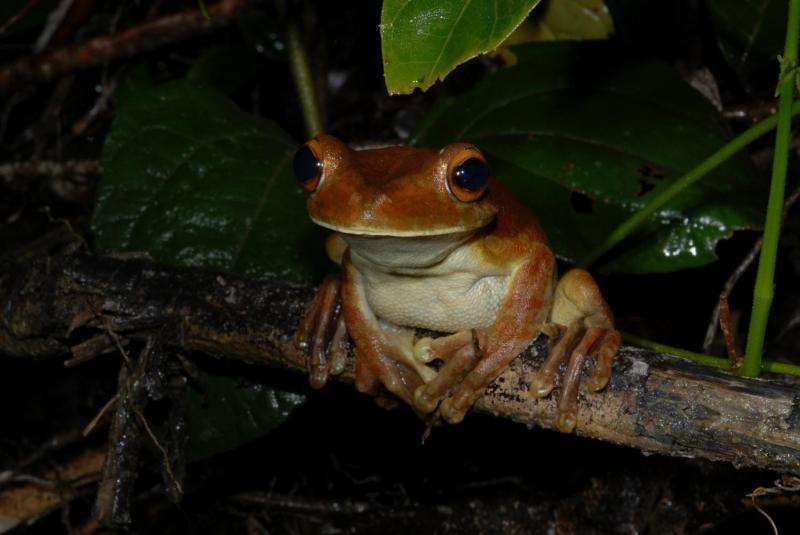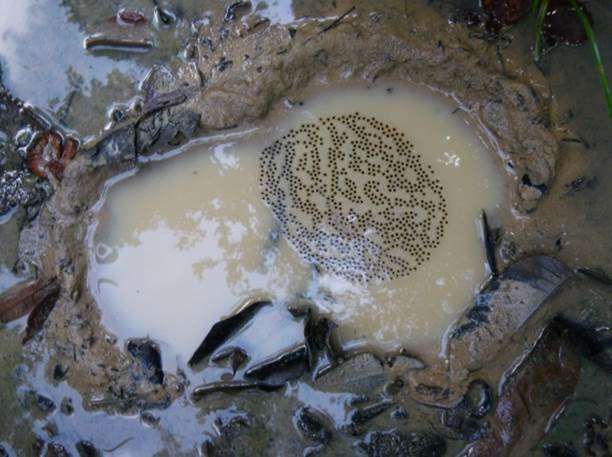Old forest roads offer survival perspectives for amphibians

Senckenberg scientists have studied the impact of old forest roads on the species diversity in the rainforest of Central Guyana. They reached the conclusion that the established roads may be of use for amphibians and should therefore not necessarily be closed or restored to their natural state. For example, ruts in the roads filled with accumulated water can serve as spawning grounds for frogs during dry periods. The study was recently published in the scientific journal Frontiers in Ecology and the Environment.
Brown corridors traversing the otherwise lush green: As a rule, roads that cut through the rainforest are not a pleasant sight. "We have now studied the impact of such forest roads on the species diversity among amphibians," explains Dr. Raffael Ernst of the Senckenberg Natural History Collections in Dresden, and he continues, "In doing so, we have moved from the bird's-eye view to the frog's perspective.
Among other things, the international team of scientists around Ernst intended to find out whether the ecological restoration of the roads would be a sensible measure in terms of the preservation of species diversity. "We were able to demonstrate that water that is retained on the roads can serve as an important habitat for the frogs' reproduction, in particular during dry periods," explains Ernst.
For example, in the water-filled ruts of an unused forest road the researchers discovered nests of the tree frog species Hypsiboas boans. "Especially during periods with an unfavorable climate for amphibians, i.e., at times of severe drought, these artificial secondary habitats can therefore ensure the survival of individual species – including species that are potentially endangered," adds the amphibian researcher from Dresden.

However, the study should not be understood as an invitation for establishing additional roads or even for intensified logging in tropical rainforests. "The first cut is still the deepest and forest diversity is certainly better off if left undisturbed. But we want to point out that a variety of different aspects must be taken into account in the context of restoration measures – a return to the 'original' condition does not always constitute the best alternative for all organisms," comments Ernst.
The researchers therefore recommend to take into account the adaptive potential of organisms to modified novel habitats when designing conservation and ecological restoration strategies. This is of particular importance in times of global climate change and changes in land use practices.
"We clearly need additional studies designed to address long-term changes in order to understand all of the interactions in the rainforest ecosystem in the course of its exploitation and management," says Ernst in summary, and he adds, "Otherwise, there is the risk that we protect individual species but lose important ecological functions in the process."
More information: Raffael Ernst et al. A frog's eye view: logging roads buffer against further diversity loss, Frontiers in Ecology and the Environment (2016). DOI: 10.1002/fee.1314
Journal information: Frontiers in Ecology and the Environment

















